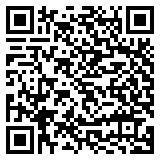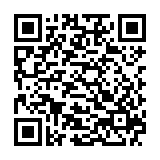When you’re creating content for a global audience, one of the most important considerations is how to adapt your message to different dialects and language varieties. After all, even if you’re writing in the same language, different regions and communities often speak in ways that are unique to their culture, history, and environment. Adapting your content for different dialects isn’t just about translation; it’s about ensuring that your message resonates with people from different backgrounds and regions. In this article, we’ll explore why it’s essential to adapt content for different dialects and varieties of a language, and how you can do it effectively.
Why Adapting Your Content for Different Dialects Matters
Languages are constantly evolving, and within each language, there are often many variations. This can include regional dialects, slang, formal vs. informal speech, and even different forms of grammar. Failing to consider these variations can result in content that feels “off” or disconnected from your audience.
Here’s why adapting your content for dialects is crucial:
- Cultural Relevance: People identify strongly with the dialects they speak. Using the right dialect shows respect for that identity and helps make your content feel more relevant and relatable.
- Avoiding Miscommunication: Words or phrases that are common in one dialect might be confusing or even offensive in another. Adapting your language prevents misunderstandings and helps you avoid potentially embarrassing mistakes.
- Improving Engagement: When people see that your content speaks directly to their way of speaking and thinking, they’re more likely to engage with it. Personalization and localization help foster a stronger connection with your audience.
Understanding Dialects and Language Varieties
Before diving into how to adapt your content, it’s important to understand what we mean by dialects and language varieties. Here’s a quick breakdown:
- Dialects: A dialect is a particular form of a language that is spoken in a specific geographical area or by a specific group. Dialects can include variations in vocabulary, grammar, pronunciation, and even spelling. For example, British English and American English are different dialects of the same language.
- Language Varieties: These are broader categories of language that might include regional, social, or functional variations. A language variety could be formal or informal, technical or casual. It’s the way people adapt their language to fit a particular context or audience.
For example, the way English is spoken in the UK differs from how it’s spoken in the US, but it’s also different when comparing formal and informal settings. Think of how language changes when someone is writing an email to their boss versus chatting with a friend.
Step 1: Identify Your Target Audience’s Dialect
The first step in adapting your content is identifying which dialect or variety of the language your target audience uses. For example:
- If you’re creating content for an audience in the UK, you’ll want to use British English, which has differences in spelling (e.g., “colour” vs. “color”), vocabulary (e.g., “biscuit” vs. “cookie”), and even grammar (e.g., “I’ve got” vs. “I have”).
- If your audience is in the US, you’ll need to adjust for American English spelling and vocabulary.
- If you’re targeting a global audience, you might need to find a middle ground between these dialects, or even go further and focus on regional variations (e.g., American English as spoken in California vs. New York).
Researching where your audience is located and understanding their language preferences will help you decide which dialect to use.
Step 2: Localize Vocabulary and Phrasing
One of the most important aspects of adapting content for different dialects is ensuring that your vocabulary matches the way people speak in a given region. Words can vary greatly between dialects. For instance:
- In American English, you’d use “apartment” for a place to live, but in British English, it’s often referred to as a “flat.”
- In Australian English, “thongs” are what Americans call “flip-flops,” and Brits might call them “flip-flops” too.
- Even words like “elevator” (American) and “lift” (British) can confuse an audience if you don’t tailor your content to fit the region.
Localizing your vocabulary ensures that your message is clear and doesn’t unintentionally confuse or alienate your audience.
Step 3: Adapt the Tone and Formality Level
The tone of your content is another aspect that should change depending on the dialect. Different regions or communities have varying preferences for how formal or informal language should be. For example:
- Informal vs. Formal: In some cultures, like in the US, informal language might be more acceptable in a wide range of contexts, even in professional settings. Meanwhile, in countries like Japan or Germany, formal language is more likely to be preferred in work-related communications.
- Humor and Idioms: Humor and idiomatic expressions can vary significantly between dialects. Phrases or jokes that are common in one region might be confusing or fall flat in another. For example, saying “I’m over the moon” might be a well-understood idiom in the UK but might sound strange to someone from the US.
Being aware of these differences will help you adjust the tone of your content so that it feels appropriate for the intended audience.
Step 4: Consider Regional Grammar Differences
Grammar differences can also impact how your content is received. While grammar rules in English tend to be fairly consistent, some regional variations exist. For example:
- In American English, collective nouns (like “team” or “family”) are often treated as singular (e.g., “The team is playing well”), while in British English, they’re more commonly treated as plural (e.g., “The team are playing well”).
- In some dialects, sentence structure might be slightly different, or certain words may be used in different contexts (e.g., “ain’t” in informal American English).
Be mindful of these regional grammar rules when adapting your content to ensure it feels authentic and correct.
Step 5: Test Your Content with Native Speakers
Once you’ve adapted your content for the relevant dialects, it’s essential to test it with native speakers. Native speakers will be able to tell you if your content feels natural, if the language is appropriate, and if there are any areas that still seem awkward or off.
Testing your content ensures that your message resonates with your audience and helps you avoid any language mistakes that might slip through the cracks.
Conclusion: Speak to Your Audience in Their Own Language
Adapting your content for different dialects and varieties of a language is essential for reaching a global audience. By understanding the regional differences in vocabulary, tone, grammar, and formality, you can ensure that your content feels relevant, respectful, and effective. Whether you’re creating marketing materials, websites, or social media posts, taking the time to tailor your language will help you connect with your audience on a deeper level.
When in doubt, always remember that language is a bridge to understanding, and respecting the linguistic diversity of your audience is one of the best ways to build trust and engagement.





0 Comments